
Tourism Places In sikarMost visited tourist places in sikar are : Fort and Palace sikar Fort Madho Niwas Kothi Rani mahal devi pura balaji khatu shyam ji maroo park harshnath lalolaw balaji nehru park Jeen mata mandir bhagat singh market sikar Jumma Masjid 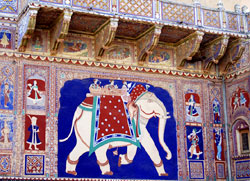 sikar is one of the three district which come under Shekhawati, the land of murals. The region belonged to the Shekhawat thakurs (chieftains), descendents of the enterprising Rao Shekha who founded this principality sometime in the 15th century (see History of Shekhawati for more). After a series of ups and downs, sikar, the largest thikana (feudatory state) under the Jaipur State, passed on to the hands of the Shekhawat Rajput Daulat Singh in 1687AD. The man laid some good plans for the capital's buildup which were later realized by his son, Sheo Singh. Sheo earnestly started on a building spree in 1724AD and changed the whole face of the town.
This is generally taken to be the foundation day of sikar, although something of the place existed from much before. Sheo Singh built the palace, the fort and the first town walls. In this he was supported by Sardul Singh, another Shekhawat Rajput who evicted the Mughal nawab (governor) of Jhunjhunu and took his place. After some time, Sheo and Sardul got together and evicted the nawab of Fatehpur, Sardar Khan. A later ruler of sikar, Devi Singh, further enlarged the town by building the fort of Deogarh (8km southeast of the town) in the 1780s. and sikar was on its way to glory, eventually becoming one of the most important towns in the Open Air Art Gallery of Rajasthan called Shekhawati.
See also Modi Institute of Technology in sikar is also world famous institute . which is situtated in Lakshman Garh 30 Km far away from sikar main city.
sikar is one of the three district which come under Shekhawati, the land of murals. The region belonged to the Shekhawat thakurs (chieftains), descendents of the enterprising Rao Shekha who founded this principality sometime in the 15th century (see History of Shekhawati for more). After a series of ups and downs, sikar, the largest thikana (feudatory state) under the Jaipur State, passed on to the hands of the Shekhawat Rajput Daulat Singh in 1687AD. The man laid some good plans for the capital's buildup which were later realized by his son, Sheo Singh. Sheo earnestly started on a building spree in 1724AD and changed the whole face of the town.
This is generally taken to be the foundation day of sikar, although something of the place existed from much before. Sheo Singh built the palace, the fort and the first town walls. In this he was supported by Sardul Singh, another Shekhawat Rajput who evicted the Mughal nawab (governor) of Jhunjhunu and took his place. After some time, Sheo and Sardul got together and evicted the nawab of Fatehpur, Sardar Khan. A later ruler of sikar, Devi Singh, further enlarged the town by building the fort of Deogarh (8km southeast of the town) in the 1780s. and sikar was on its way to glory, eventually becoming one of the most important towns in the Open Air Art Gallery of Rajasthan called Shekhawati.
See also Modi Institute of Technology in sikar is also world famous institute . which is situtated in Lakshman Garh 30 Km far away from sikar main city.sikar to Churu via Jhunjhunu 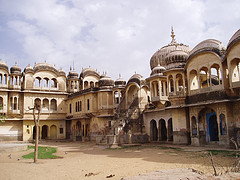 The Shekhawati tourist circuit encompassing some of the spectacular tourist attractions of Rajasthan, is one of the top draws of this vivacious state. It consists of sikar, Jhunjhunu and Churu and is often described as the 'open air art gallery' of Rajasthan.
It is famed for its splendid mural adorned havelis, that date back to the nineteenth century. Mythology and glorious historical episodes formed the fodder for the 'chiteras' or mural artisans.
This popular tourist circuit is well connected roadways and railways. You can board the Shekhawati Express that will take you to Jhunjhunu and sikar.
While Delhi and sikar are located at a distance of 299 kilometers, Jhunjhunu and Delhi are located at a distance of 251 kilometers through Narnaul, Dharuhera and Singhana. Churu is situated at a distance of 90 kilometers from sikar.
Fortified sikar boasts of imperial havelis adorned by lovely murals, a monumental fortress and sacred shrines among other star attractions. You can visit shrines dedicated to Gopinath, Madan Mohan and Raghunath, Kahtu Shyamji, Sodhani haveli, Harsh Nath Temple, the abode of Madho Niwas, Sakambhari, Biyani Haveli, Jeen Mata Temple, Jubilee Hall and Lohayal, among others.
Jhunjhunu, the former capital of Shekhawati, is yet another marvelous tourist haunt. On a sojourn of this region you will come across a large number exquisitely decorated havelis like the Khatri Mahal, Vilasrai Khaitan haveli.
You can also make a trip to the numerous shrines that dots the region. The temple of Rani Sati and Biharji shrine are a few among a host of others.
Lovely mansions of one Kanhaiya Lal Bagla and Kothari are the top draws of this region. The Nagashree museum, Sat Narain shrine are a few other top notch tourist sites of Churu.
You can couple your visit to these hotspots with trips to Salasar Balaji, that is famous for the shrine dedicated to Lord Hanuman and the wildlife park of Tal Chappar.
The Shekhawati tourist circuit encompassing some of the spectacular tourist attractions of Rajasthan, is one of the top draws of this vivacious state. It consists of sikar, Jhunjhunu and Churu and is often described as the 'open air art gallery' of Rajasthan.
It is famed for its splendid mural adorned havelis, that date back to the nineteenth century. Mythology and glorious historical episodes formed the fodder for the 'chiteras' or mural artisans.
This popular tourist circuit is well connected roadways and railways. You can board the Shekhawati Express that will take you to Jhunjhunu and sikar.
While Delhi and sikar are located at a distance of 299 kilometers, Jhunjhunu and Delhi are located at a distance of 251 kilometers through Narnaul, Dharuhera and Singhana. Churu is situated at a distance of 90 kilometers from sikar.
Fortified sikar boasts of imperial havelis adorned by lovely murals, a monumental fortress and sacred shrines among other star attractions. You can visit shrines dedicated to Gopinath, Madan Mohan and Raghunath, Kahtu Shyamji, Sodhani haveli, Harsh Nath Temple, the abode of Madho Niwas, Sakambhari, Biyani Haveli, Jeen Mata Temple, Jubilee Hall and Lohayal, among others.
Jhunjhunu, the former capital of Shekhawati, is yet another marvelous tourist haunt. On a sojourn of this region you will come across a large number exquisitely decorated havelis like the Khatri Mahal, Vilasrai Khaitan haveli.
You can also make a trip to the numerous shrines that dots the region. The temple of Rani Sati and Biharji shrine are a few among a host of others.
Lovely mansions of one Kanhaiya Lal Bagla and Kothari are the top draws of this region. The Nagashree museum, Sat Narain shrine are a few other top notch tourist sites of Churu.
You can couple your visit to these hotspots with trips to Salasar Balaji, that is famous for the shrine dedicated to Lord Hanuman and the wildlife park of Tal Chappar. Khatushyamji Temple 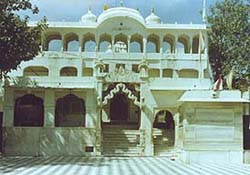 Khatu Shyam Ji Temple is situated in district of sikar in state of Rajasthan, at a distance of 17 km from Reengus.
The legend of this immensely popular Krishna temple can be traced back to the medieval Mahabharat where Barbareek, the son of great Pandav brother Bhim and Nag Kanya (snake princess) displayed his great warrior skills that pleased Lord Shiva who endowed his blessings in the form of Teen Ban (three arrows)
In order to watch the famous war of Mahabharat, he sat towards the battle field and in between his tryst with Lord Krishna in disguise becasme a vital part of the history and thus the incarnation of KHATU SHAMJI.
The temple is architecturally rich. Lime mortar, marble and tiles have been used in constructing the structure. The shutters of the sanctum are beautifully covered with silver sheet.
Outside is the prayer hall, named Jagmohan and its walls are elaborately painted, depicting mythological scenes. The entrance gate and exit gate are made of marble their brackets are also of marble and feature ornamental floral designs.
There is an open space in front of the entrance gate of the temple. The Shyam Bagicha is a garden near the temple from where flowers are picked to be offered to the deity. The Samadhi of Aloo Singh, a great devotee, is located within the garden.
The Gopinath temple lies to the south-east of the main temple. The Gaurishankar temple also lies nearby. There is an interesting tale associated with the Gaurishankar temple.
There is a steady stream of devotees the year round, but lakh of them gather at the annual fair from Phalgun Sudi Dashmi to Dwadashi. Apart from being a place of pilgrimage, a large number of people come for the Jadula ceremony (the first time all hair is shaved off the head) of their children.
Khatu Shyam Ji Temple is situated in district of sikar in state of Rajasthan, at a distance of 17 km from Reengus.
The legend of this immensely popular Krishna temple can be traced back to the medieval Mahabharat where Barbareek, the son of great Pandav brother Bhim and Nag Kanya (snake princess) displayed his great warrior skills that pleased Lord Shiva who endowed his blessings in the form of Teen Ban (three arrows)
In order to watch the famous war of Mahabharat, he sat towards the battle field and in between his tryst with Lord Krishna in disguise becasme a vital part of the history and thus the incarnation of KHATU SHAMJI.
The temple is architecturally rich. Lime mortar, marble and tiles have been used in constructing the structure. The shutters of the sanctum are beautifully covered with silver sheet.
Outside is the prayer hall, named Jagmohan and its walls are elaborately painted, depicting mythological scenes. The entrance gate and exit gate are made of marble their brackets are also of marble and feature ornamental floral designs.
There is an open space in front of the entrance gate of the temple. The Shyam Bagicha is a garden near the temple from where flowers are picked to be offered to the deity. The Samadhi of Aloo Singh, a great devotee, is located within the garden.
The Gopinath temple lies to the south-east of the main temple. The Gaurishankar temple also lies nearby. There is an interesting tale associated with the Gaurishankar temple.
There is a steady stream of devotees the year round, but lakh of them gather at the annual fair from Phalgun Sudi Dashmi to Dwadashi. Apart from being a place of pilgrimage, a large number of people come for the Jadula ceremony (the first time all hair is shaved off the head) of their children. Ganeswar 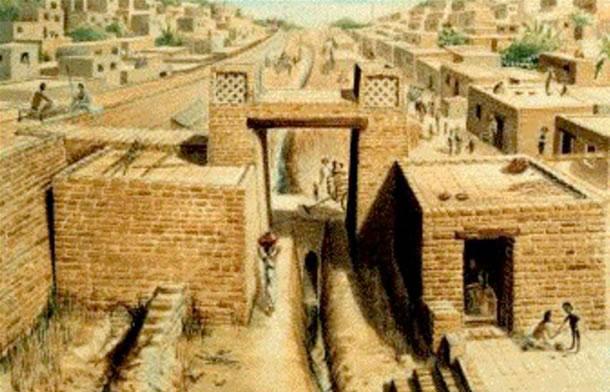 Ganeshwar & Baleswar both 15 km. away from Neem ka Thana on different roads and 80 km. from sikar via Udaipurwati. Ganeshwar is a pilgrimage as well as a salubrious Picnic spot. The hot sulphur springs here is a major draw. A dip in the spring, it is believed, cures skin diseases. It is an ancient site. Excavations in the Ganeshwar areas have revealed the remains of a 4000 years old civilizations. Close by is Baleshwar, yet another worth visiting site, ponds and old Shiva temple is there surrounded by Aravali Hills.
Ganeshwar & Baleswar both 15 km. away from Neem ka Thana on different roads and 80 km. from sikar via Udaipurwati. Ganeshwar is a pilgrimage as well as a salubrious Picnic spot. The hot sulphur springs here is a major draw. A dip in the spring, it is believed, cures skin diseases. It is an ancient site. Excavations in the Ganeshwar areas have revealed the remains of a 4000 years old civilizations. Close by is Baleshwar, yet another worth visiting site, ponds and old Shiva temple is there surrounded by Aravali Hills. Jeen Mataji Temple 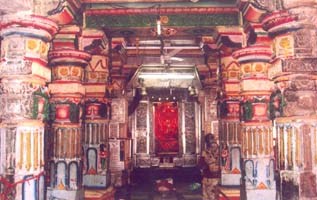 Jeen Mata is 30 Km. away from sikar. There is an ancient Temple dedicated to Jeen Mata ( Goddess of Power) . It is said that this temple was built thousand years ago. Lacs of devotees congregate here every year in the month of CHAITRA & ASHWIN at the time of NAVARATRA fairs. There are a number of Dharamshala's to accommodate large number of visitors.
There is a popular belief which has come down to people through the centuries that in a village Ghoghu of Churu, King Ghangh loved and married an Apsara (nymph) on the condition that he would not visit her palace without prior information. King Ghangh got a son called Harsha and a daughter Jeen. Afterwards she again conceived but as chance would have it king Ghangh went to her palace without prior intimation and thus violated solemn vow he had made to the Apsara. Instantly she left the king and fled away with her son Harsha and daughter Jeen whom she abandoned at the place where presently the temple stands. The two children here practiced extreme asceticism. Later a Chauhan ruler built the temple at that place. Goddess Jeen Mata is Devi herself, the very embodiment of divine cosmic power. The deity is Mahishasura Mardini Durga having eight arms. The miraculous deity fulfills the wishes of her devotees. Whosoever acts unholily in the temple precincts is punished with a divine retribution. Mahishasura was demon in the form of a buffalo. He waged a fierce battle with Shri Durga. He with his forces affronted the goddess with all his demoniac powers. The battle with Durga has been beautifully described in the third chapter of Shri Durga Saptashati. Finally Durga pressed Mahisha with her foot and struck his neck with her lance. The lion too suppressed Mahisha (then in the buffalo form). This lion riding eight-armed form of Durga is Mahishasura Mardini. Here Jeen Mata is worshipped in her eight-armed form. The temple has been constructed in the style of architecture adopted by Pratihar and Chauhan clans of Rajputs. There are twenty four pillars with panels of figures finely carved on them. The main temple has a very high Shikhar (Pinnacle) in the midst . This is a unique temple from every point of view. It is believed that the Pandavas during their exile from Hastinapur came to the thick forests of this place where they spent their period here incognito. The daughter named Jeen of the King Ghangh also practised asceticism here. The place has acquired a great religious importance and is held sacred by all. Nestled amongst the high Arawali hills, the idyllic surroundings lend this sacred a natural grace of serenity and lushgreen vegetation with fauna and flora.
Jeen Mata is 30 Km. away from sikar. There is an ancient Temple dedicated to Jeen Mata ( Goddess of Power) . It is said that this temple was built thousand years ago. Lacs of devotees congregate here every year in the month of CHAITRA & ASHWIN at the time of NAVARATRA fairs. There are a number of Dharamshala's to accommodate large number of visitors.
There is a popular belief which has come down to people through the centuries that in a village Ghoghu of Churu, King Ghangh loved and married an Apsara (nymph) on the condition that he would not visit her palace without prior information. King Ghangh got a son called Harsha and a daughter Jeen. Afterwards she again conceived but as chance would have it king Ghangh went to her palace without prior intimation and thus violated solemn vow he had made to the Apsara. Instantly she left the king and fled away with her son Harsha and daughter Jeen whom she abandoned at the place where presently the temple stands. The two children here practiced extreme asceticism. Later a Chauhan ruler built the temple at that place. Goddess Jeen Mata is Devi herself, the very embodiment of divine cosmic power. The deity is Mahishasura Mardini Durga having eight arms. The miraculous deity fulfills the wishes of her devotees. Whosoever acts unholily in the temple precincts is punished with a divine retribution. Mahishasura was demon in the form of a buffalo. He waged a fierce battle with Shri Durga. He with his forces affronted the goddess with all his demoniac powers. The battle with Durga has been beautifully described in the third chapter of Shri Durga Saptashati. Finally Durga pressed Mahisha with her foot and struck his neck with her lance. The lion too suppressed Mahisha (then in the buffalo form). This lion riding eight-armed form of Durga is Mahishasura Mardini. Here Jeen Mata is worshipped in her eight-armed form. The temple has been constructed in the style of architecture adopted by Pratihar and Chauhan clans of Rajputs. There are twenty four pillars with panels of figures finely carved on them. The main temple has a very high Shikhar (Pinnacle) in the midst . This is a unique temple from every point of view. It is believed that the Pandavas during their exile from Hastinapur came to the thick forests of this place where they spent their period here incognito. The daughter named Jeen of the King Ghangh also practised asceticism here. The place has acquired a great religious importance and is held sacred by all. Nestled amongst the high Arawali hills, the idyllic surroundings lend this sacred a natural grace of serenity and lushgreen vegetation with fauna and flora.Harshnath Temple 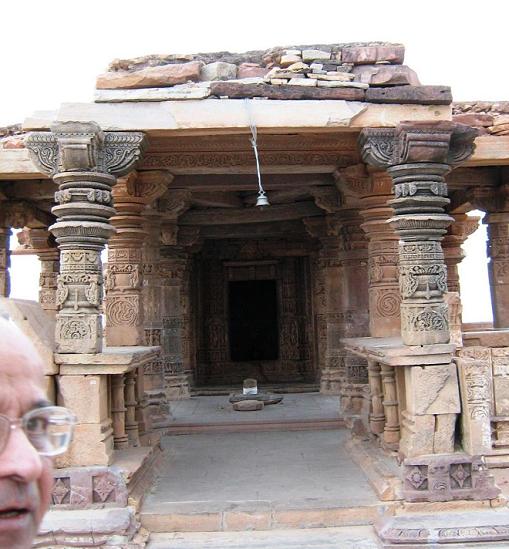 Harshnath Temple is 14 km. away from sikar is an ancient site famous for the ruins old Shiva Temple (10th Century) located on the high hills of Aravali. The architectural display of the old temple is breath taking. There is an another Shiva temple built by Shiv Singh of sikar in the 18th century.
Harshnath Temple is 14 km. away from sikar is an ancient site famous for the ruins old Shiva Temple (10th Century) located on the high hills of Aravali. The architectural display of the old temple is breath taking. There is an another Shiva temple built by Shiv Singh of sikar in the 18th century.Lachhmangarh One of the most impressive forts in the Shekhawati region, the fort offers breathtaking views of the city and its surroundings. Rambagh Rambagh boasts of many attractions like the Shani Temple with its exquisitely painted frescoes. The Ganga Temple and a number of elaborately painted havelis are some of the other attractions of Rambagh. Sakambhari Besides being a perfect picnic spot, Sakambhari is also known for its 7th century temple dedicated to Sankari Mata. |

